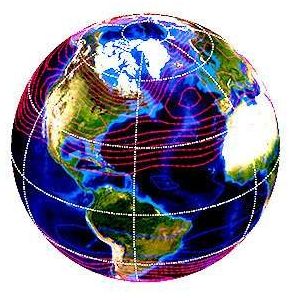For the first time, scientists from Lawrence Livermore National Laboratory (LLNL) and five other organizations have shown that human influences significantly impact the size of the seasonal cycle of temperature in the lowest layer of the atmosphere.
To demonstrate this, they applied a so-called “fingerprint” technique. Fingerprinting seeks to separate human and natural influences on climate. It relies on patterns of climate change—typically patterns that are averaged over years or decades. But in the new research appearing in the July 20 edition of the journal Science, the team studied seasonal behavior, and found that human-caused warming has significantly affected the seasonal temperature cycle.
The researchers focused on the troposphere, which extends from the surface to roughly 16 kilometers in the atmosphere at the tropics and 13 kilometers at the poles. They considered changes over time in the size of the seasonal cycle of tropospheric temperature at different locations on the Earth’s surface. This pattern provides information on temperature contrasts between the warmest and coldest months of the year.










Comments are closed.